The province of La Convencion
The province of La Convención is the largest of the thirteen provinces that make up the department of Cusco. Unlike the rest of the region, a large part of its territory is made up of tropical forests of high and low jungle. Its capital is the city of Quillabamba, famous for its tourist attractions such as the Seven Jars Falls, the Yanay Falls, the Sambaray Spa and the Illapani Falls.
All about the province of La Convención
Explore the province of the Convention
La Convencion is the largest province of Cusco. Much of its territory is jungle. There you can visit several tourist attractions, especially waterfalls and incredible landscapes. Get to know them!
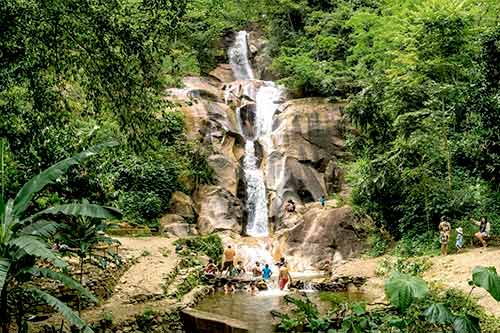
1 Siete Tinajas Waterfalls
This tourist attraction is in Quillabamba (Cusco jungle). It has a waterfall in whose wells (jars) and rock formations petroglyphs stand out.
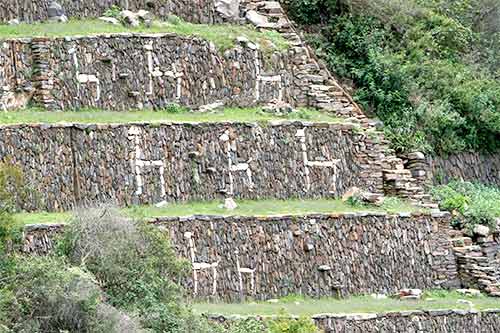
2 Choquequirao
Choquequirao is an Inca archaeological site known as the ‘Sacred Sister of Machu Picchu’. To get there you must do a route of 4 days and 3 nights.
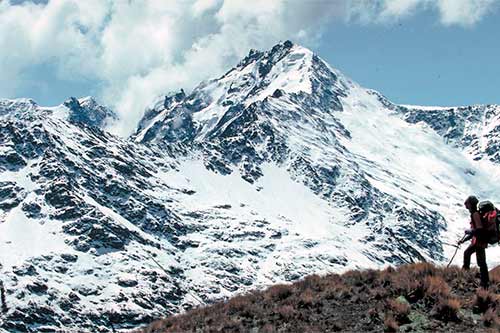
3 Salkantay Snowy
The Salkantay is a snowy mountain in Cusco that was worshiped by the Incas. It is famous for being part of the 5-day, 4-night hiking trail to Machu Picchu.
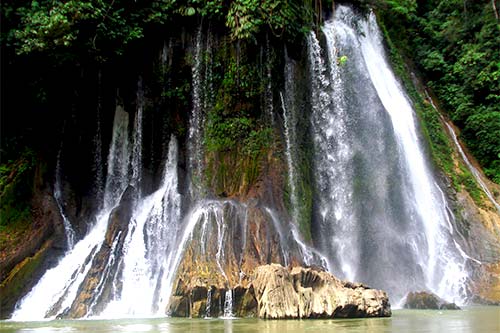
4 Quillabamba
Quillabamba is the capital of the province of La Convencion in Cusco. It is famous for its waterfalls, pools, hot weather, flora, fauna, coffee, cocoa, and more.
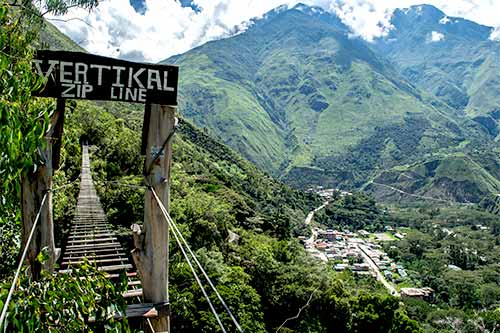
5 Santa Teresa
Santa Teresa is a town in Cusco close to Machu Picchu. It is famous for its Cocalmayo thermal baths, its tropical climate and its tourist services.
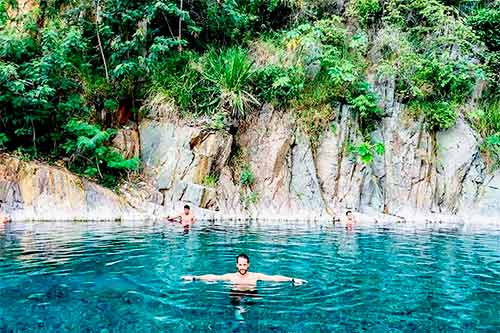
6 Thermal baths of Cocalmayo
These baths have up to 4 pools. It is in the town of Santa Teresa, just 8.5 kilometers from Machu Picchu. They are considered the best in Cusco.
The largest province of Cusco
The province of La Convención covers an area of 30,162 square kilometers, making it the largest province in Cusco.
Its capital is the city of Quillabamba, located in the heart of the region’s jungle from Cuzco. In fact, more than 90% of its territory is part of the tropical region.
The province is made up of fourteen districts: Echarati, Huayopata, Inkawasi, Kimbiri, Maranura, Megantoni, Ocobamba, Pichari, Quellouno, Santa Ana, Santa Teresa, Vilcabamba, Villa Kintiarina and Villa Virgen.
In the past, the province was inhabited by various indigenous communities such as: Mañaríes, Pilcozones, Izcazingas and Machiguengas. Although there is no evidence, these Amazonian tribes were in commercial contact with the Incas.
The province was created on July 25, 1857.
Its most visited tourist attractions are its waterfalls, its coffee plantations, thermal baths, Inca archaeological sites and more. Highlights include: the Seven Jars Falls, the Yanay Falls, the Illapani Falls, the Cocalmayo Thermal Baths, the Pongo de Mainique, the Vilcabamba Archaeological Site, and the Choquequirao Archaeological Site.
General information
- Province: La Convencion.
- Foundation: July 25, 1857.
- Districts: Echarati, Huayopata, Inkawasi, Kimbiri, Maranura, Megantoni, Ocobamba, Pichari, Quellouno, Santa Ana, Santa Teresa, Vilcabamba, Villa Kintiarina and Villa Virgen.
- Capital: Quillabamba.
- Extension: 30,162 m2.
- Inhabitants: 147,148 inhabitants.
- Languages: Spanish, Quechua and Amazonian languages.
- Most important tourist attractions: the seven tinajas falls, the Yanay falls, the Illapani falls, the thermal baths of Cocalmayo, the pongo de mainique, the archaeological site of Vilcabamba and the archaeological site of Choquequirao.
Where is?
The province of La Convencion is located in southern Peru. It limits to the north with the departments of Junín and Ucayali. To the east with the department of Madre de Dios. To the south with the Cusco provinces of Calca, Urubamba and Anta. To the west, with the departments of Ayacucho and Apurímac.
How to get to La Convención?
To travel from the city of Cusco to the city of Quillabamba (capital of the province of La Convención) it is necessary to take a public transport bus from the company ‘Turismo Ampay’. The trip takes just over 5 hours and has an average cost of 15 Peruvian soles per person.
Map
History
The province of La Convencion has a very old history that is not fully revealed. From unknown times it was inhabited by different Amazonian tribes, some extinct, others rescued and studied, such as: the Mañaríes, Pilcozones, Izcazingas and the Machiguengas.
During the Inca period, some of these tribes, such as the Machiguengas, had a commercial relationship with the Incas. The Incas knew this region as ‘Wilcapampa Yunca’. Due to the ruggedness of the region and the ferocity of the Amazonian tribes, they did not conquer that territory.
It is worth mentioning that this jungle territory witnessed the clashes between the Incas and the Spanish during the flames ‘Wars of Vilcabamba’.
During the colonial era, the invasion of Amazonian lands by the Spanish began. In addition, a stage of evangelization began on the part of the religious orders. Unfortunately many indigenous tribes abandoned their lands. Some disappeared and others were cheap labor from the colonial system.
In 1857, President Ramón Castilla ordered the creation of the province of La Convención. Only in 1918 the city of Quillabamba was declared capital of the province. In the mid-20th century, the province was the scene of the first uprisings against the abusive system of landowners.
At the end of the 20th century and the beginning of the 21st century, important hydrocarbon deposits were discovered in this territory in the Camisea sector.
Today La Convencion is an interesting tourist destination for Peruvians as well as for Cusqueños themselves.
Tourist attractions
These are the most popular tourist attractions in the province of La Convención:
- The Seven Jars Falls – This waterfall has a waterfall several meters high. Along its waterfall there are up to seven rock formations like wells. It is located 17 kilometers from the city of Quillabamba.
- Yanay Falls – This waterfall stands out for its waterfall of almost 70 meters as well as for the beautiful walk that leads there. The waterfall is in the town of Maranura, 15 kilometers from Quillabamba.
- Illapani Falls – This waterfall stands out for being surrounded by a landscape full of vegetation and birds. Its name comes from a Quechua word that means ‘Place of lightning’. It is located in the district of Echarate, 22 kilometers from the city of Quillabamba.
- The thermal baths of Cocalmayo – These hot water pools are considered the best in all of Cusco. The temperature of its waters varies from 38ºC. up to 44ºC. It is located in the town of Santa Teresa. The entrance for foreigners costs 10 Peruvian soles. For Peruvians, 5 soles.
- The pongo de mainique – In the lower part of the Urubamba River, the course of the river becomes rough. The tall rock formations become narrow and steep. That is why the waters are torrential. Going through it in the rainy season is very risky. It marks the entrance to the lower Urubamba. It is 70 kilometers from the city of Quillabamba.
- The archaeological site of Vilcabamba – The citadel of Vilcabamba was the last refuge of the Incas who settled there after the arrival of the Spaniards in Cusco in 1536. For a long time the place was hidden in the thick vegetation of the jungle of Cusco. In 1964 the American explorer Gene Savoy found it. Today to get there you have to do an arduous walk of several days.
- The archaeological site of Choquequirao – This Inca citadel has certain architectural and landscape similarities with Machu Picchu. That is why it is called ‘The sacred sister of Machupicchu’. To get there you must make an arduous two-day trek. Because of this, not many visitors arrive. The citadel has enclosures, platforms, temples, cemeteries, squares and more.
Climate
The climate in the province of La Convención varies according to its districts. However, in general, it has a hot tropical climate that varies from a maximum of 33ºC. and a minimum of 10ºC. The highest temperatures are recorded from May to August. The minimum temperatures are also recorded at that time of year.
The rains are intense from November to April (especially in January, February and March). The rest of the year the rains are intermittent.
Photo gallery
More information
Every year, on the day of Pentecost (movable date), the festivity in honor of the Lord of Torrechayoc is celebrated in the city of Quillabamba. The celebrations include parades, music bands, delicious cuisine, dozens of groups of dancers and general joy in the town.
There is not much hotel supply in the province of La Convención. Some of the best options are the Gran Hotel Panorama (in Quillabamba), the Hotel Inmaculada (in Maranura), the Eco Quechua Lodge & Coffee Experience (in Santa Teresa) and the Ecolodge Don Feliz (in Quillabamba).